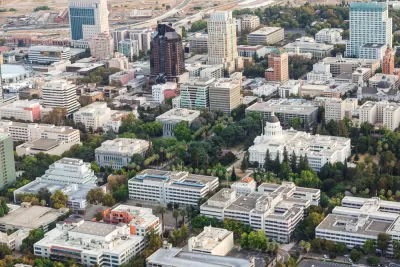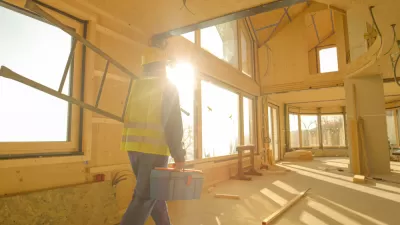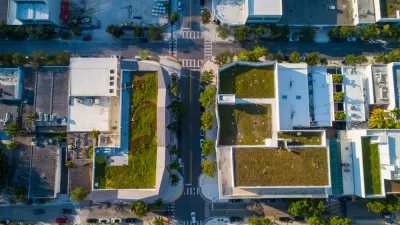California’s Building Code accomplished a first-in-the-nation step to mitigate carbon emissions from the construction and maintenance of buildings, by limiting embodied carbon in some commercial and school buildings.

[Updated August 15, 2023] The California Building Standards Commission (CBSC) and the Division of the State Architect (DSA) recently adopted new building codes that set a new standard in the United States.
According to a press release from the AIA California, California is now the first state set general code standards “to limit embodied carbon emissions in the construction, remodel, or adaptive reuse of commercial buildings larger than 100,000 sq feet and school projects over 50,000 sq ft.”
“In making these changes, California becomes the first state in the nation to set general code standards that require the reduction of embodied carbon emissions in the design and building process applicable to both commercial buildings and schools,” adds the press release.
An article by Dan Roche for the Architect’s Newspaper adds additional insight into the accomplishment, explain that “embodied carbon refers to greenhouse gas emissions that emerge from building materials over their entire life cycle, this includes in manufacturing, transport, installation, upkeep, disassembly, and discarding.”
Representatives from AIA California first proposed the code changes in 2019, reports Roche.
“California follows Norway’s lead which has become a thought leader in embodied carbon discourse. FutureBuilt, a pilot program sponsored by the Norwegian government, is committed to cutting the country’s embodied carbon emissions in half,” adds Roche.
FULL STORY: California becomes the first state in the U.S. to tackle embodied carbon in its energy codes

Planetizen Federal Action Tracker
A weekly monitor of how Trump’s orders and actions are impacting planners and planning in America.

Maui's Vacation Rental Debate Turns Ugly
Verbal attacks, misinformation campaigns and fistfights plague a high-stakes debate to convert thousands of vacation rentals into long-term housing.

Restaurant Patios Were a Pandemic Win — Why Were They so Hard to Keep?
Social distancing requirements and changes in travel patterns prompted cities to pilot new uses for street and sidewalk space. Then it got complicated.

In California Battle of Housing vs. Environment, Housing Just Won
A new state law significantly limits the power of CEQA, an environmental review law that served as a powerful tool for blocking new development.

Boulder Eliminates Parking Minimums Citywide
Officials estimate the cost of building a single underground parking space at up to $100,000.

Orange County, Florida Adopts Largest US “Sprawl Repair” Code
The ‘Orange Code’ seeks to rectify decades of sprawl-inducing, car-oriented development.
Urban Design for Planners 1: Software Tools
This six-course series explores essential urban design concepts using open source software and equips planners with the tools they need to participate fully in the urban design process.
Planning for Universal Design
Learn the tools for implementing Universal Design in planning regulations.
Heyer Gruel & Associates PA
JM Goldson LLC
Custer County Colorado
City of Camden Redevelopment Agency
City of Astoria
Transportation Research & Education Center (TREC) at Portland State University
Jefferson Parish Government
Camden Redevelopment Agency
City of Claremont





























